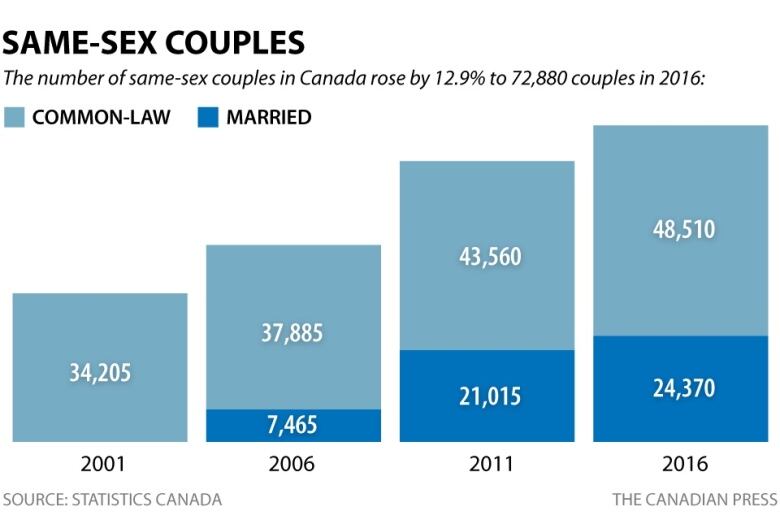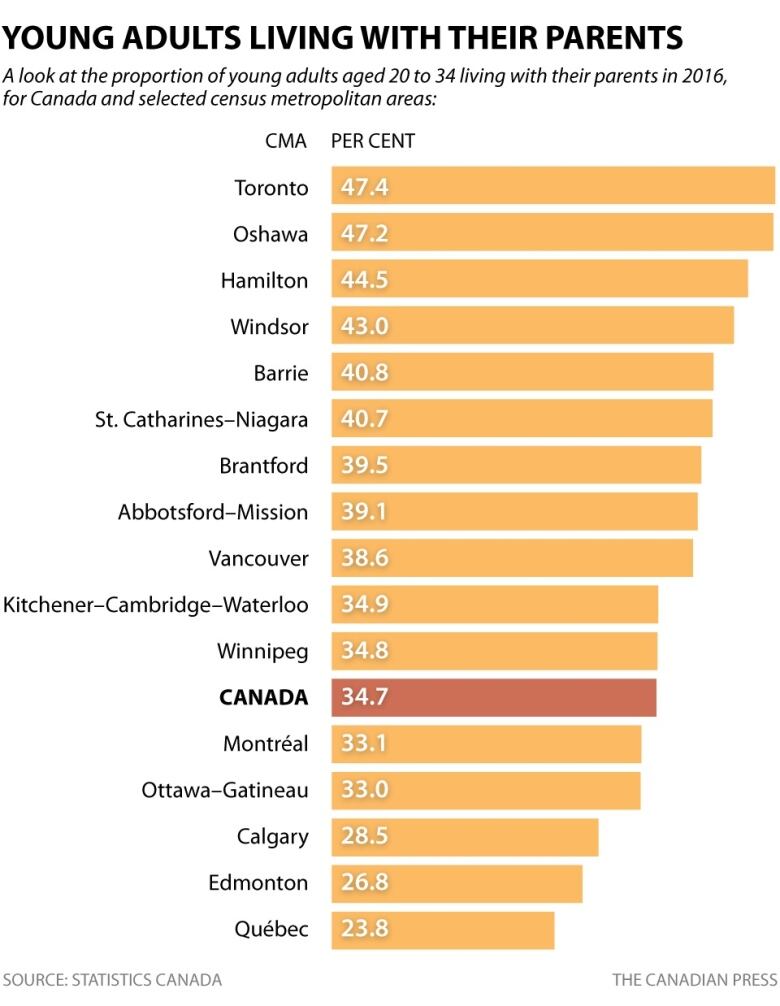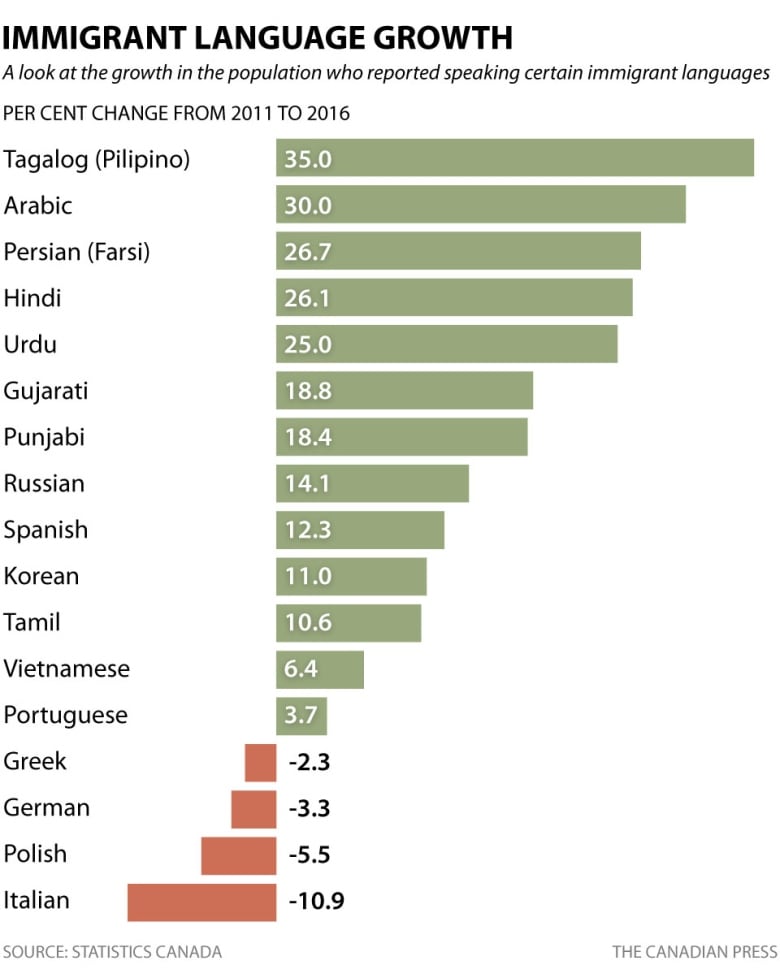2016 census: Highlights of latest data on language, marital status, households
Statistics Canada releases new data on martial status, families, households and language.
Canadians increasingly living alone and without children, while linguistic diversity and bilingualism on rise

Statistics Canada released new information from the 2016 census regarding families, households, marital status and language. Here are some of the highlights:
More single-person households
- 28.2 per cent of households have only one person living in them, the highest share in Canada's history.
- 13.9 per cent of the adult population now lives alone, was 1.8 per cent in 1951.
- Single-person households are most common in Quebec.
- 26.5 per cent of households are made up of couples with children.
- 25.8 per cent of households are made up of couples without children.
- 8.9 per cent are single-parent households.
- 2.9 per cent are multi-generational households, the fastest growing type.

- Interactive: How does your family compare to others in Canada?
- Census data shows Canada increasingly bilingual, linguistically diverse
- More Canadians living alone and without children, census data show
- Interactive: Remix your census data
Couples without children growing
- Share of couples living without children grew 7.2 per cent since 2011, compared to 2.3 per cent growth of couples living with children.
- Couples living with at least one child down to ahistoric low at 51.1 per cent.

- 60.5 per cent of couples between the ages of 25 and 29 are living together with no children.
- 35.1 per cent of couples between the ages of 30 and 34 are living together with no children.
- More than 80 per cent of couples between the ages of 35 and 49 are living with children.
Common law couples more common
- Common law couples make up 21.3 per cent of couples, up from 6.3 per cent in 1981.
- Nunavut (50.3 per cent) and Quebec (39.9) have the highest share of common law couples.
- 42.7 per cent of common law couples in Quebec live with children vs. 11.7 per cent in other Canadian provinces.

More same-sex couples
- There are 72,880 same-sex couples, representing 0.9 per cent of all couples.
- 60.7 per cent growth since 2006 compared to 9.6 per cent among all couples.
- Roughly half of same-sex couples live in Toronto, Montreal, Vancouver or Ottawa-Gatineau.
- 12 per cent of same-sex couples live with children vs. 51.4 per cent of opposite-sex couples.
- Four-fifths of same-sex couples with children are women.

Young Canadians still living with parents
- 34.7 per cent of Canadians between the ages of 20 and 34 are still living with parents.
- 47.4 per cent of young Canadians in Toronto still live with their parents.
- Young Canadians living with families of their own down to 41.9 per cent from 49.1 per cent in 2001.

4/5ths of single parents are women
- 69.7 per cent of children live with both of their biological parents.
- 19.2 per cent live with a single parent, four-fifths of them being mothers.
7.6 million speakers of non-official languages
- Number of Canadians who speak a language other than French or English at home up 14.5 per cent since 2011 to 7.6 million.
- 22.9 per cent of Canadians have a non-official language as their mother tongue, up from 21.3 per cent.
- 69.9 per cent of Canadians with a non-official language as their mother tongue speak English or French at home.
- 98.1 per cent of Canadians can hold a conversation in either English or French.
Mandarin most spoken non-official language
- 641,100 Canadians speak Mandarin at home.
- 594,705 speak Cantonese.
- 568,375 speak Punjabi.
- 553,495 speak Spanish.
- 525,375 speak Tagalog.
- 514,200 speak Arabic.
- No individual non-official language spoken by more than two per cent of Canadians at home.
Tagalog, Arabic fastest growing languages
- Use of Tagaloghas grown by 35 per cent since 2011, more than any other language.
- Arabic grew by 30 per cent, followed by Persian/Farsi (26.7 per cent), Hindi (26.1 per cent) and Urdu (25 per cent).
- Use of languages from earlier waves of immigration dropping: Italian -10.9 per cent, Polish -5.5 per cent, German -3.3 per cent and Greek -2.3 per cent.

Use of English up, French down
- 78.9 per cent of Canadians speak either French or English as their mother tongue, down from 82.4 per cent in 2001.
- 74.7 per cent of Canadians speak English at home, up from 74 per cent in 2011.
- 23.3 per cent of Canadians speak French at home, down from 23.8 per cent.
- 21.3 per cent of Canadians have French as their mother tongue, down from 22 per cent.
- 86.4 per cent of Quebeckers speak French at home, down from 87 per cent.
- 78.4per cent of Quebeckershave French as their mother tongue, down from 79.7 per cent.
Bilingualism at historic high
- 18 per cent of Canadians are bilingual, the highest on record.

- Two-thirds of growth in bilingual population in Quebec.
- 44.9 per cent of Quebeckers are bilingual, 34 per cent of people in New Brunswick.
- Quebec and neighbouring regions of Ontario and New Brunswick home to 85.8 per cent of bilingual Canadians.
- 46.2 per cent with French as their mother tongue are bilingual, compared to 9.4 per cent of anglophones and 11.7 per cent of those with a non-official language as their mother tongue.
Indigenous languages being learned
- Cree is most common Indigenous language spoken at home, by 83,985 Canadians.
- Inuktitut spoken by 39,025 Canadians at home and 21,800 speak Ojibway.
- 228,770 Canadians speak Indigenous languages at home, more than the number who say an Indigenous language is their mother tongue.
- More young Indigenous Canadians are learning their native tongue as a second language.












_(720p).jpg)


 OFFICIAL HD MUSIC VIDEO.jpg)
.jpg)



























































































